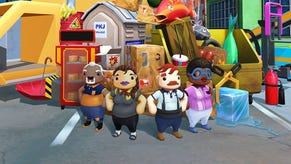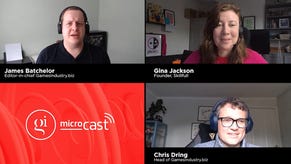What every indie needs to know about PR
ICO Partners' Thomas Reisenegger outlines five keys to success for indie devs
With game development tools available to just about anyone today, it's never been easier to make a game. Just about anyone with some degree of talent can become an indie, but standing out in the crowd on mobile app stores or the PC can be a monumental challenge. If you're already famous, you have an inherent leg up on the competition, but most indies of course are not. Making a very good game doesn't cut it anymore; on top of having quality, indies must leverage PR and marketing wisely. During a talk at GDC 2016, ICO Partners' Thomas Reisenegger offered an overview of what he believes are the five most important things indies must do to improve their chances of success.
1. Positioning
Assuming you've already got a handle on the basics such as creating a website, using social media and building a mailing list, Reisenegger noted that the first hurdle to clear is positioning. It sounds simple, but in reality it can be really hard. Your game may have numerous points of interest or features that you believe many gamers could latch on to, but in order to properly market a game, you need to hone in on one key message and one key piece of art. The idea is that you want to offer something most people can connect with easily. "You're not selling a game, you're selling a story, especially to press," Reisenegger said.
It's also totally fine to go back to the drawing board with your game's positioning. If you think you've figured out the positioning but then you see what fans like based on feedback, you can go back once or twice in the beginning to position differently. Reisenegger pointed to a couple of games that had difficult concepts to market but managed to pull of their positioning beautifully. This War of Mine, for example, was a concept that could have been a PR nightmare. But with the use of one important sub-headline, "In war, not everyone is a soldier," people could more easily understand and connect with the game idea. Another example was Axiom Verge, which was able to target Metroid fans from the outset. The name itself doesn't seem to convey anything, but by positioning immediately as a Metroidvania game, the game attracted the right fans.
2. Mastering news beats
The next important PR skill for indies to master is the news cycle with the press. You only have a certain amount of PR ammunition and opportunities to reach out to the press, so you have to plan announcements strategically to give your game maximum exposure. Realistically, you have about seven distinct beats you can pursue: your game announcement, first screenshots, first trailer, start of a beta, previews, release date, and finally release announcement (plus launch trailer).
"If I would throw money into one thing, I would do it on the trailer. Make your minute in the spotlight count"
While it may look easy, there's more to it than meets the eye so either you need to study and learn a lot by reading many different websites and learning what they like to cover and when and what they won't cover, or you'll need to hire a PR expert. When communicating your beats, Reisenegger noted that you probably want to avoid the huge event months (shows like E3, GDC, Gamescom, etc) if you're an indie because the press is already flooded and your chances of getting coverage are much reduced. It's also better to communicate your beat typically between Tuesday and Thursday, he said. You also need to be mindful of different time zones depending on the regions of the world you're targeting, and importantly, you don't want to make an announcement on a bank holiday by accident and squander your chance of coverage when no one's working.
That being said, you can pretty much ignore the above advice if your goal is to target non-traditional media like Youtubers and streamers. For those people, your story isn't important, Reisenegger said, so just give them your game to play and hope that they will play it and cover it once. They don't need headlines, so the only thing to consider is the timing of when you'd like to have your game covered by a streamer: earlier on in development or sometime after release. Finally, if you're making a mobile game, you can probably ignore the streaming crowd altogether as it's unlikely they will cover your game, said Reisenegger.
3. Making a solid trailer
The third and possibly most important element for indies to look at is the game trailer. "If I would throw money into one thing, I would do it on the trailer. Make your minute in the spotlight count," said Reisenegger. When making a trailer you need to make an immediate positive first impression. You need to capture the viewer's attention in roughly the first 15 seconds, Reisenegger said, and then you don't want to drag out the trailer for too long; short and sweet is ideal to get your positioning across (1:30 is probably about as long as you should go).
Reisenegger pointed to This War of Mine again as a game that managed to use its trailer effectively to reinforce its positioning and properly communicate the atmosphere of the game.
4. Guerilla marketing
The fourth key for indies to consider is guerilla marketing, which is essentially a way to leverage low-cost unconventional marketing tactics. Reisenegger brought up some of the tactics that were used back in 2002 for Acclaim's Burnout 2. PR had promised that when the game came out they'd pay off people's speeding tickets. The games press picked up on the wacky marketing stunt and that generated a news beat; then when the government naturally wouldn't allow tickets to be paid off, the games press picked up on it again, so Burnout 2 gained a couple press beats with one stunt.
Guerilla marketing can be effective when handled with care but there are many risks associated with it, Reisenegger said. The tactics often break taboos, they aren't always 100 percent legal, and they don't guarantee good PR. Reisenegger stressed that the idea that any PR is good PR is simply not true. Ultimately, any guerilla marketing must fit with the theme of your game and you should think twice about the implications before putting it in motion.
5. Events
The fifth pillar of PR for indies is events. Attending events is naturally great for networking, showing your game to the media and getting feedback, but "don't dance at every party," Reisenegger said. Unless you have something new and interesting to show at each event you attend, there's little point in trying to get the attention of the press over and over again. This ties into the mastering of news beats; since the press tends to cover the major events the most, it may be harder to get their attention then if you don't have something really interesting to share.
More pro-tips
Another thing to be aware of is that your PR plans really need to be planned out and implemented right away; doing too little, too late is a recipe for disaster. Additionally, playing the indie card doesn't mean much at all anymore, so don't expect the press to listen to you just because you're indie.
It's also important to recognize that you can repackage your beats. If you announced a game and showed off a trailer and got literally zero reaction or coverage, Reisenegger advised just announcing again as if nothing happened - it doesn't hurt to give it a second or third try, but don't overdo it.
Lastly, indies should ideally be engaging in Pull PR instead of Push PR, Reisenegger said. It makes much more sense to find out what websites like to cover and serve them something interesting, giving them a very detailed pitch that essentially writes the story for them and gets the reporter intrigued. It's not always easy to figure out, but it's the best way to get on board with a Kotaku or Polygon, he said. You should be sending out something that the editor wants instead of banging a publication over the head with your game.









